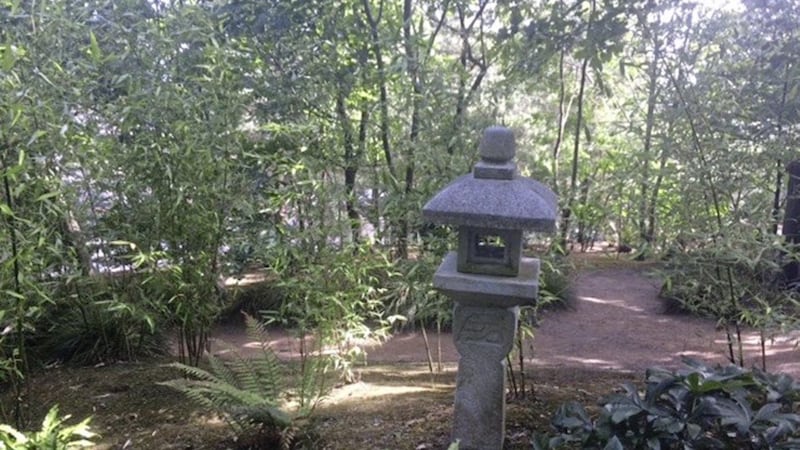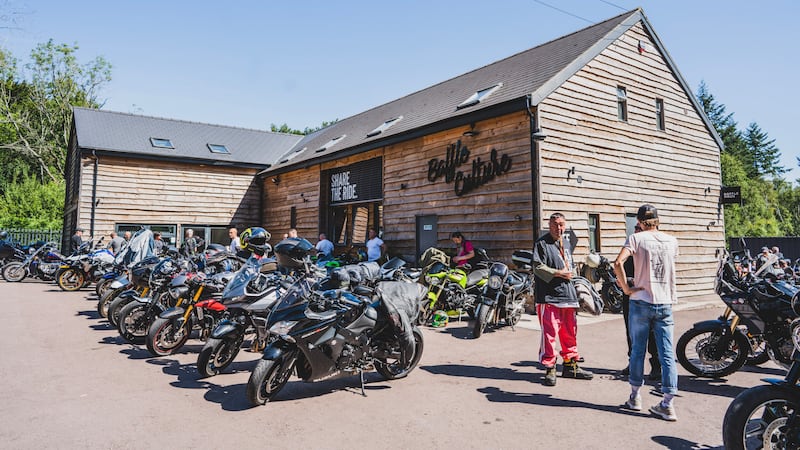"THAT trees, at least Japanese trees, have souls, cannot seem an unnatural fantasy to one who has seen the blossoming of the umenoki and the sakuranoki. This is a popular belief in Izumo and elsewhere." – Lafcadio Hearn, In a Japanese Garden (1892)
A living biography told through the gardens and landscapes that reflect the cultures and mythology of the places where the subject lived: it is a brilliant idea and one that has been realised in Tramore, Co Waterford, where one of Ireland’s most fascinating sons spent his childhood summers.
Patrick Lafcadio Hearn was actually born in Greece in 1850 on the island of Lefkada, the son of an Irish father and Greek mother. He came to Dublin aged two, but a few years later his mother returned to Greece and he was brought up by his father’s aunt.
The last time Hearn saw his father was on Tramore beach when he was aged seven.
In 1869 he travelled to Ohio and for a time was homeless before being taken under the wing of English painter Henry Watkins who helped him break into journalism. In 1874 Hearn married a black woman who had been born a slave, a union which was illegal in Ohio at the time.
The marriage did not last and Hearn went to New Orleans where his reports and writing became increasing esoteric, covering Buddhism, Islam, Voodoo and Creole culture. He wrote cook books, novels and essays.
In 1887 he went to Martinique in the French West Indies and lived there until 1890 when he accepted a commission to report from Japan and it was here, settling in the town of Matsue, that he married Koizumi Satzu, taking her family name to become Koizumi Yakumo.
He travelled widely throughout Japan, writing for US newspapers and publishers, producing articles and books on Japanese literature, ghost stories, culture, religion and folklore, most of which are still in print. With his wife and children he later moved to Tokyo but his health was declining and he died in 1904 aged just 54.
The Lafcadio Hearn Gardens in Tramore take you on a journey through his life in the tradition of the Japanese strolling garden. Starting off in a Victorian-style garden to reflect his Irish childhood, within the two-acre setting you traverse through a landscape of trees and shrubs which defined the places where Hearn lived and wrote about.
An American Garden, a Greek Garden, A Japanese Tea Garden and a small, brooding woodland. Prairie grass from America, bamboo from Japan, water features and rock formations merge and diverge from one another to create a living biography.
Some of the features are inspired by the stories and legends of Japan that Hearn wrote about. The Stream Garden incorporates natural rock formations to create a grotto that reflects a story called The Children’s Ghosts at Kyu-Kukedo-San, which tells of a cave where the spirits of children are looked after by the god Jizo-san.
My favourite spot was the meditative Gardens of Peace and Harmony, where the stream that wends its way through the gardens tumbles as a small waterfall into a pond where lotuses – an important symbol in Buddhism – float on the surface.
Hearn’s descendants are regular visitors from Japan and have been closely involved with the development of the gardens and the project has been described as "a bridge between Ireland and Japan".
The gardens are a work in progress, the trees and shrubs still maturing, but already it is a vibrant living memorial to Hearn and his work.
Reflecting on his own garden in Matuse, Hearn wrote that "even plants and trees, rocks and stones, all shall enter into Nirvana".
:: Visit Lafcadiohearngardens.com.








